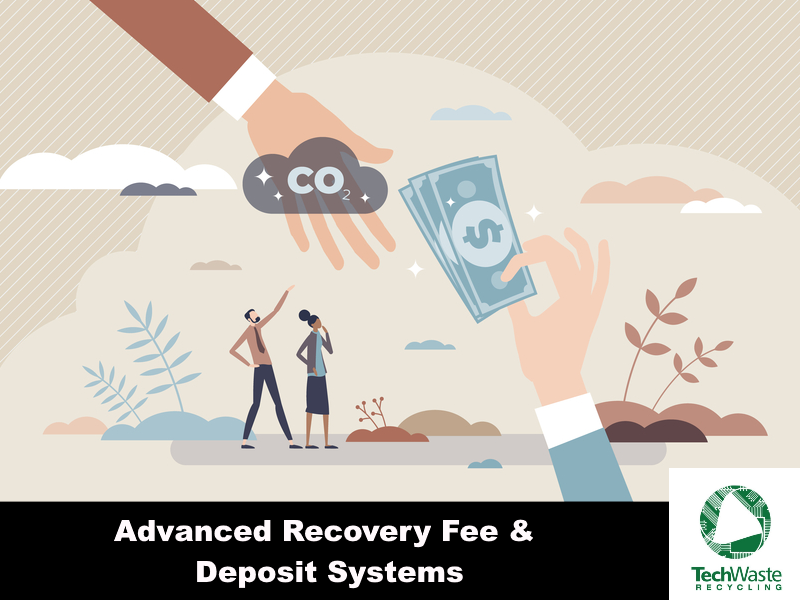The Advanced Recovery Fee & Deposit Systems is a legislative tool created to find a sustainable way to compensate for proper trash disposal and recycling.
The Advanced Recovery Fee & Deposit Systems impose a deposit on products during import or production, which is often included in the sale price. A refund of the initial deposit is given to the customer when the item is delivered to a deposit location. The government keeps a small amount of the deposit to pay for the item’s collection, transport, and processing. The Advanced Recovery Fee & Deposit Systems has been proven successful worldwide in promoting the recovery of end-of-life products, and in enabling the government to obtain sufficient financing to procure these items for recycling.
How is the Advanced Recovery Fee & Deposit Systems Administered?
With the Advanced Recovery Fee & Deposit Systems, mobile phones, batteries, desktop and laptop computers, copier/fax machines, printers, TVs, connections, VCRs, and other electronic equipment cannot be lawfully disposed of in any way other than recycling.
Depending on the product’s size and use, the recycling fee for certain products may change. For instance, a flat-screen TV may cost between $4 and $12. The profit from the Advanced Recovery Fee & Deposit Systems finances proper trash management and recycling on a larger scale thereby reducing harmful pollutants that damage the environment. The Advanced Recovery Fee & Deposit Systems also brings accountability to manufacturers and consumers to join in a collaborative effort for responsible waste disposal and recycling.
California is the sole state in the U.S. to administer the Advanced Recovery Fee & Deposit Systems.
What are the Advantages of Advanced Recovery Fee & Deposit Systems?
The Advanced Recovery Fee & Deposit Systems provides the following benefits and advantages.
- Shared manufacturer-consumer responsibility
- Consumer refunds for returning products such as used electronic devices for disposal and recycling
- A self-supporting recycling fund that is independent of government funding
- Limits harmful waste and prolongs the lifespan of landfills
- Lowers the overall cost of the whole procedure especially recovery expenses as the appointed officials visit the manufacturers themselves rather than traveling throughout the city
- Increases the rate of recycling and improves waste segregation
- Encourages positive behavior in responsible waste management and recycling with little need for monitoring and enforcement
How to Implement the Advanced Recovery Fee & Deposit Systems?
Establishing the Advanced Recovery Fee & Deposit Systems starts with thorough research about products that would most commonly be involved in the process. These are waste materials that have a high volume of importation, are commonly disposed of, and contribute the most to environmental pollution. Government support must then be obtained before progressing to a feasibility study to come up with the framework for the system. The manufacturers and people of the community should also be involved in the decision-making process. The legislation, system operation, and processes (banking, customs collection, redemption centers, information handling, markets, and shipping) have to be established and agreed upon to create an Advanced Recovery Fee & Deposit Systems that is ready for implementation.


































